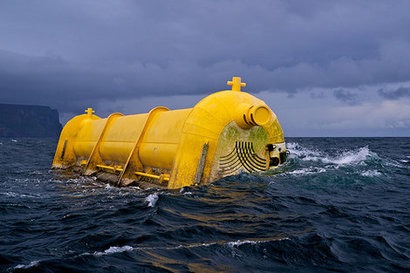
The academic analysis examines data generated by the Oyster 800 machine last year, including operations during major storms with waves reaching eight metres in height. The data has verified the ability of the Oyster flap to generate power as predicted in wave tank and numerical tests and results have been published on the company’s website by Chief Technical Officer Dr Paddy O’Kane.
“These exceptional results have been gathered in more than 750 distinct sea states encompassing 94 percent of Oyster's power matrix and verify, for the first time, that predictions of the energy Oyster can generate in any given sea state are accurate - and in the case of large sea states is actually greater than our original calculations” said Aquamarine Power Chief Executive Officer John Malcom. “Very few, if any, other wave energy technologies have been able to verify as much data across as wide a range of sea states, including operations through major storms. In simple terms, Oyster does exactly what it says on the tin.”
Mr Malcolm added that the data has given Aquamarine Power confidence in its near shore technology and confirms that future iterations of Oyster technology can be developed at laboratory and test tank scale - secure in the knowledge that subsequent full-scale machines will perform as predicted. The company’s business plan is to continue to develop the next-generation Oyster at laboratory scale and focus on areas of the technology that are currently less reliable, in particular the power take off system.
Aquamarine Power is working with Bosch Rexroth, Carnegie Wave Energy and other companies to develop WavePOD - a sealed sub-sea generating unit which can be used by a range of wave energy technologies, including future iterations of Oyster. It has already constructed a tenth-scale WavePOD prototype at the Institute for Fluid Power Drives and Controls (IFAS) at RWTH Aachen University, Germany, which is already operating. The company will shortly be publishing preliminary results from these tests.
The WavePOD consortium includes Carnegie Wave Energy UK and wave technology developers Albatern and M4 WavePower, alongside Aquamarine Power and Bosch Rexroth. Other members of the consortium are the Irish utility ESB, the Offshore Renewable Energy Catapult, IFAS and University College Dublin's Energy Research Centre.
For additional information:

